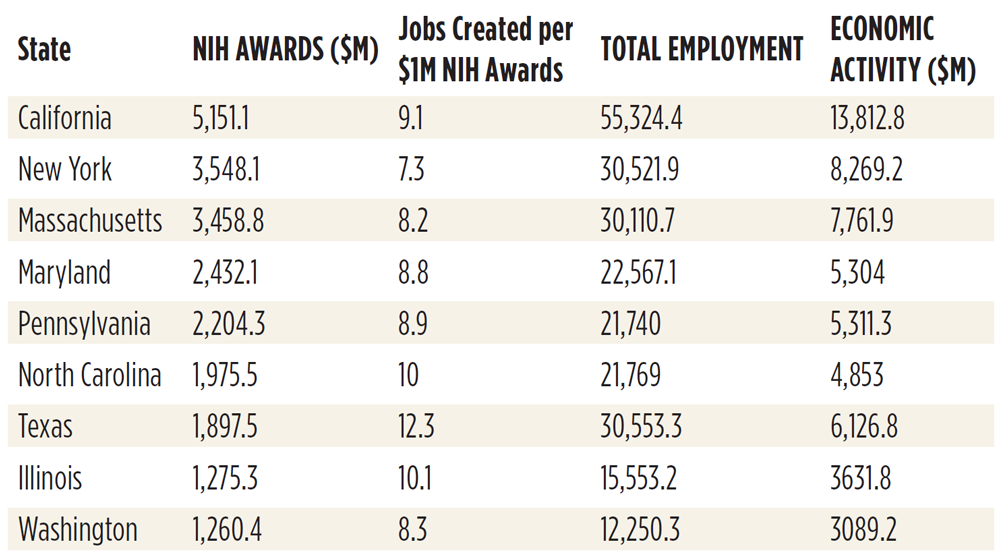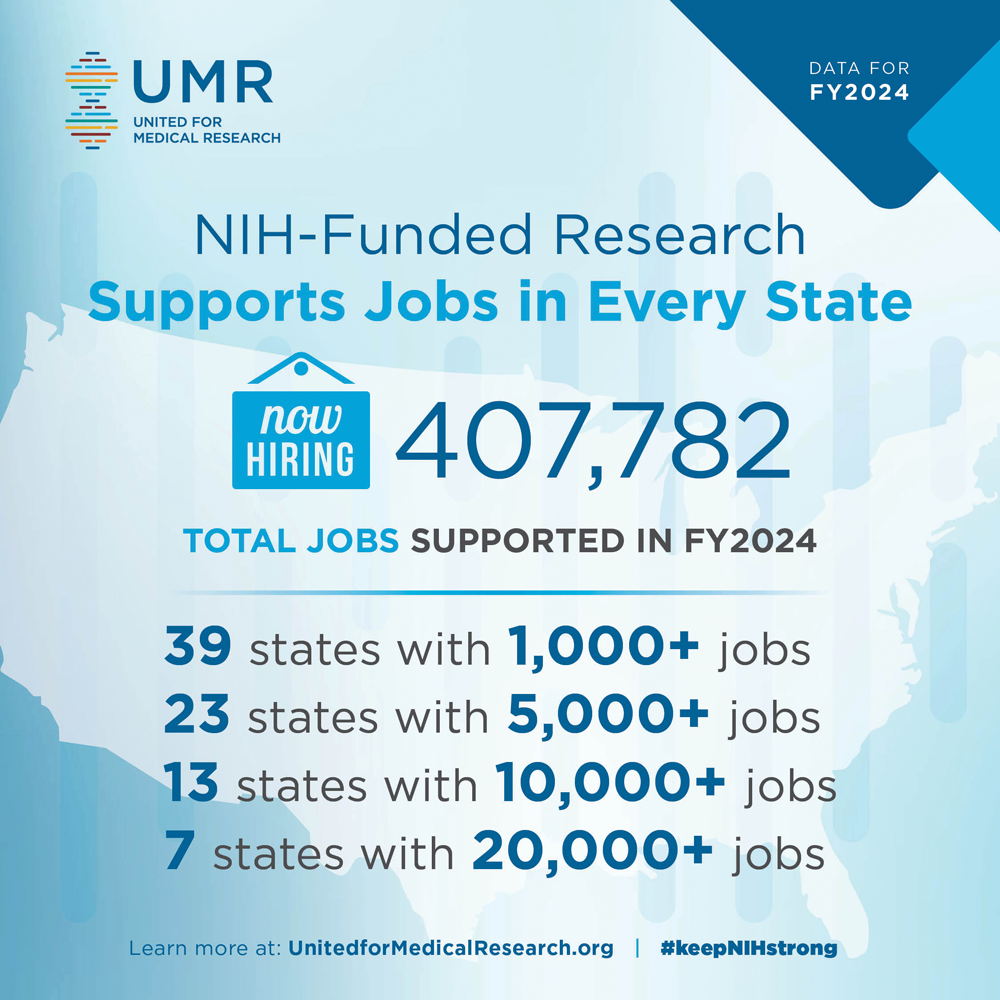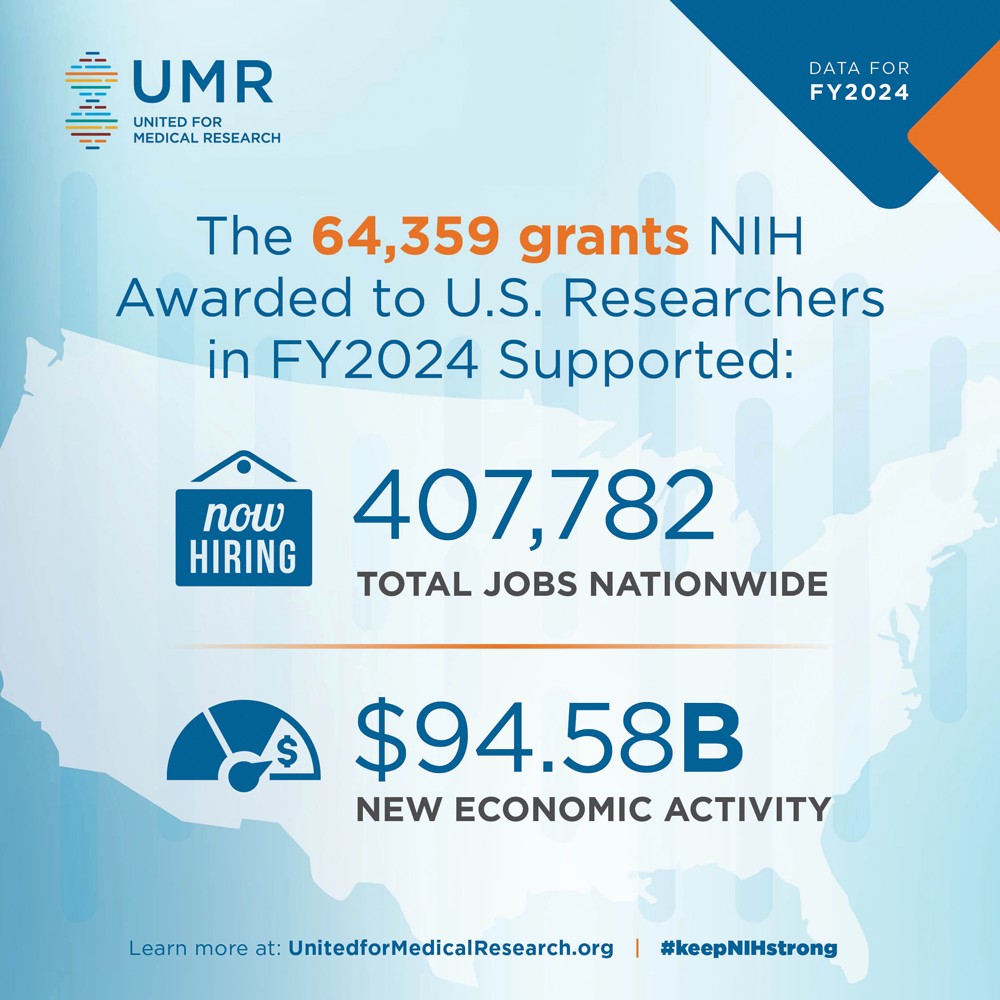A coalition of top research institutions, patient and health advocates, and companies earlier this year published its annual analysis of jobs and economic activity supported by National Institutes of Health (NIH) research funding distributed to all 50 U.S. states and the District of Columbia.
How do top states for NIH funding correlate with top locations for biotech and life sciences?
Very well. Very well indeed.
United for Medical Research counts among its members such institutions as MIT, Stanford University, Johns Hopkins University, Washington University in St. Louis and Northwestern University; organizations such as the Alzeheimer’s Association and the Association of American Cancer Institutes; and companies such as AdvaMed, BD, Johnson & Johnson and ThermoFisher Scientific.
The overall report finds NIH research funding supported 407,782 jobs and produced $94.58 billion in economic activity in FY2024 — or $2.56 of economic activity for every $1 of research funding. Since Fiscal Year 2015, the NIH budget has grown by more than $17 billion “thanks to strong bipartisan congressional support and a commitment to making medical research a critical national priority,” UMR stated. “Over the past decade, NIH research funding has driven more than $787 billion in new economic activity and supported an average of more than 370,000 jobs a year.”
UMR says analysis for the report was performed by Ronald Horst of Inforum with calculations of the jobs and economic activity resulting from NIH research awards in each state relying heavily on the Regional Input-Output Modeling System (RIMS) parameters maintained by the Bureau of Economic Analysis (BEA).
Certainly some of the top states in NIH funding are the envy of others when it comes to an active biotech economy. Here are the top 10 by NIH funding:

Biotech is prominent in — if not central to — the economy of every one of those 10 states, with NIH awards leaders California and No. 3 Massachusetts routinely acknowledged to be Nos. 1 or 2 in the biosciences sector overall (see the California spotlight on p. 137 of this issue for more from Biocom California’s 2025 Life Science Economic Impact Report).


Many of these top states are also leaders when it comes to tracked R&D spending. Reports released in late 2024 by the National Science Foundation and its National Center for Science and Engineering Statistics found that in FY2023, “of the six functional categories of state agency R&D expenditures, health-related R&D remained the largest with over $1.3 billion in expenditures, increasing 17.6% from FY2022,” with higher education institutions receiving the lion’s share. Here were the 10 states with the largest amounts of extramural R&D expenditures. Combined they accounted for $1.6 billion or 71% of all extramural R&D:
- California $497 million
- Texas $280 million
- New York $200 million
- Florida $169 million
- Ohio $117 million
- Pennsylvania $83 million
- New Jersey $96 million
- Alabama $75 million
- Tennessee $67 million
- Massachusetts $47 million
Five of these states are also among the top 10 in the UMR report on NIH funding.
“There is no better investment than one that saves lives, supports local economies and drives America’s global leadership in biomedical innovation,” said UMR President Caitlin Leach in March on the report’s release. “When Congress invests strongly and consistently in the NIH, all three of those things happen … UMR is very concerned about recent actions and proposals that would result in drastic reductions in funded research, including clinical trials, and greatly diminish NIH’s effectiveness. Such moves jeopardize lives, local communities and U.S. industries. We urge Congress and the Trump Administration to work together to ensure that America’s long-standing and highly successful biomedical innovation ecosystem, which has a strong and well-funded NIH at its center, remains the envy of the world.”

